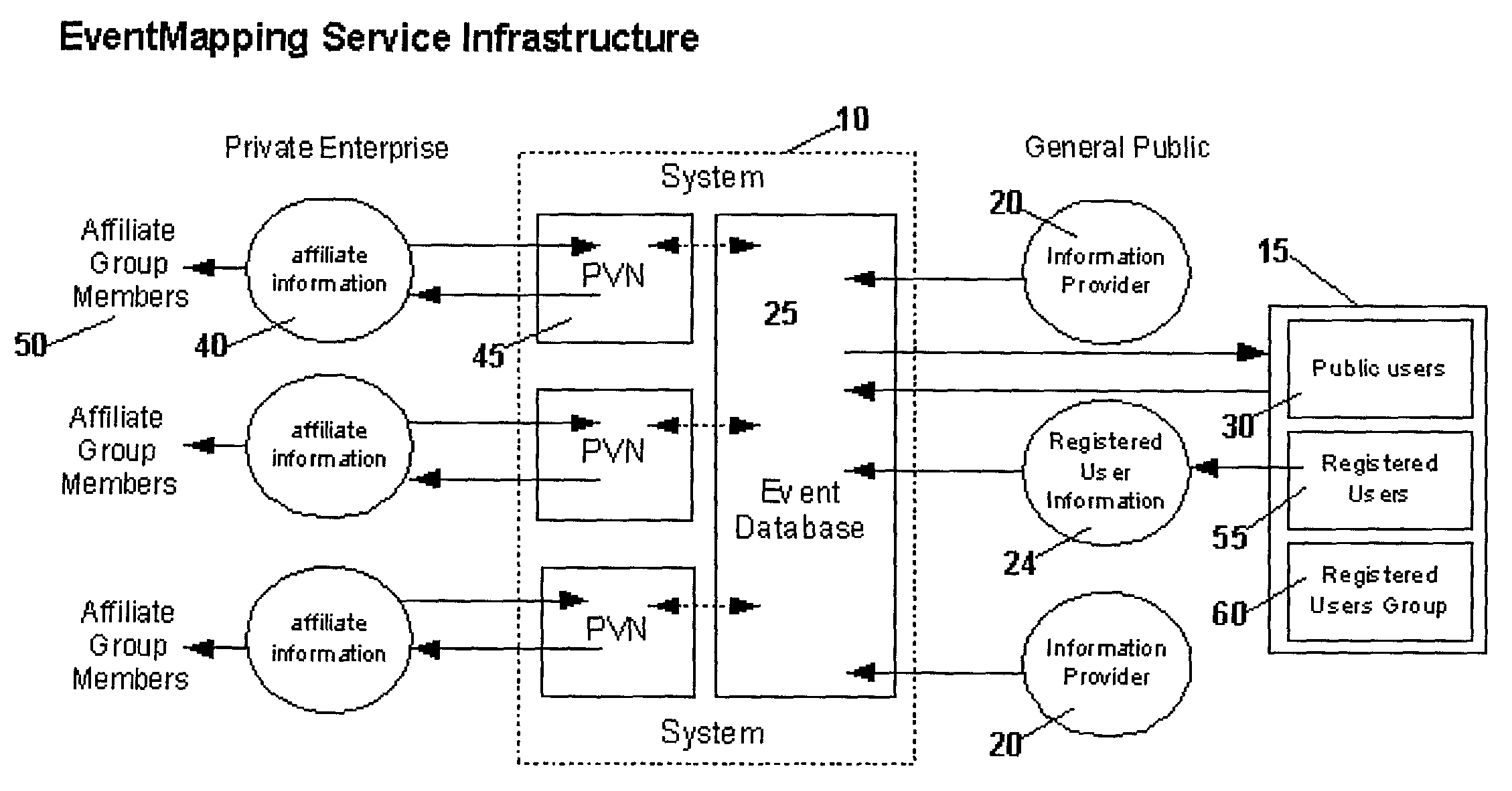Method of organizing information into topical, temporal, and location associations for organizing, selecting, and distributing information
a technology of topical, temporal and location associations, applied in the field of method of organizing event-based information, can solve the problems of cumbersome and restrictive, difficult to see by viewers, and the available methods have not yet enabled viewers to smoothly call forth sets of graphic and textual data
- Summary
- Abstract
- Description
- Claims
- Application Information
AI Technical Summary
Benefits of technology
Problems solved by technology
Method used
Image
Examples
Embodiment Construction
[0051] Reference will now be made in detail to the principles of the present invention, examples of which are illustrated in the accompanying drawings.
[0052] In an embodiment of the present invention, an event information processing system of processing event based information for distribution and display in an event information processing system includes a database and associated software for acquiring, indexing, storing, and retrieving event based information. The event based information may be characterized by topic, time, and location attributes. Display means may be provided which are capable of displaying the event based information. The event based information may be displayed as event information reflective of a query dictated by search criteria comprising coextensive ranges of topic, time, and location.
[0053] The method includes acquiring and organizing information into topical, temporal, and location associations, including applying semantic rules for parsing textual event...
PUM
 Login to View More
Login to View More Abstract
Description
Claims
Application Information
 Login to View More
Login to View More - R&D
- Intellectual Property
- Life Sciences
- Materials
- Tech Scout
- Unparalleled Data Quality
- Higher Quality Content
- 60% Fewer Hallucinations
Browse by: Latest US Patents, China's latest patents, Technical Efficacy Thesaurus, Application Domain, Technology Topic, Popular Technical Reports.
© 2025 PatSnap. All rights reserved.Legal|Privacy policy|Modern Slavery Act Transparency Statement|Sitemap|About US| Contact US: help@patsnap.com



